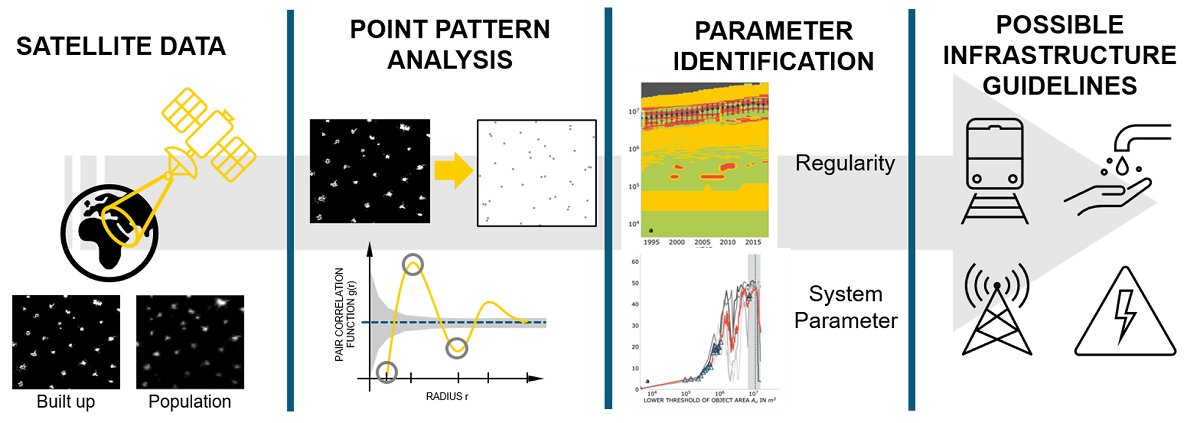The reality of people’s lives has shifted from rural to urban areas, where an ever-increasing proportion of the world’s population lives. Providing infrastructure to serve these areas, especially in the Global South, is a key task of sustainable development. A deep understanding of the spatial arrangement and scales of these urban structures and their temporal evolution can help to develop innovative solutions to issues of energy, water, or transportation infrastructures. For this purpose, in this work we study the temporal evolution of urban built-up structures (Global Artificial Impervious Area) and population distributions (Global Human Settlement Population) in four regions of the Global South (Argentina, India, Egypt, and Nigeria). We qualitatively analyze regularity through the pair correlation function and subsequently identify typical scales within the different interurban systems. In doing so, we identify that especially the large settlement objects arrange themselves in a regular way and thus typical scales exist in urban systems. Thus, settlement objects are usually located about 20 to 40 km apart from each other. This information can be used to develop sustainable infrastructure concepts, for example for passenger transport between settlements.

